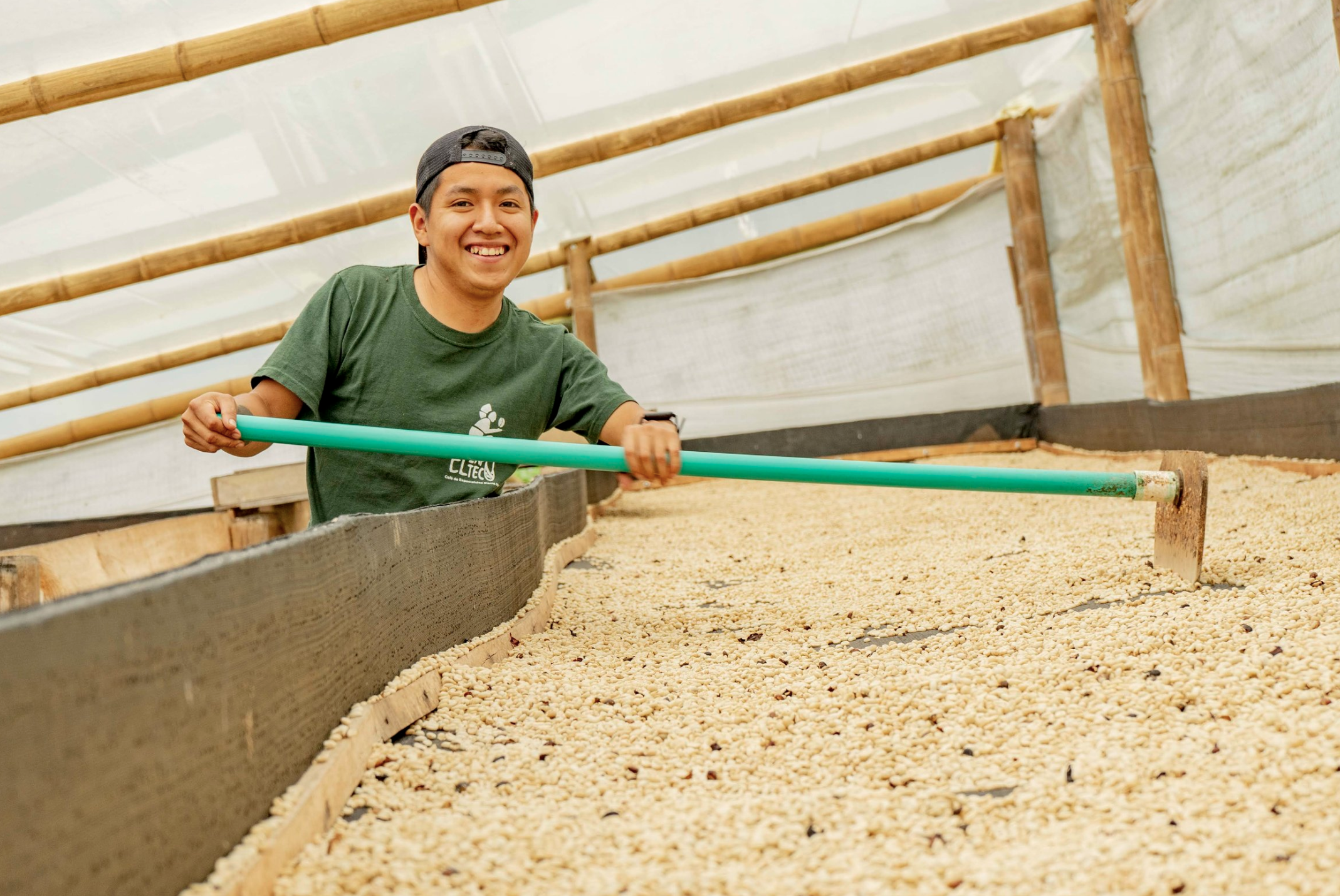A Mexican coffee producer in Colombia
Alejandro Chavez Vicente of Sierra Juarez, Mexico, reflects on the two months he spent at El Fénix in Quindío, Colombia
Picking pink bourbon cherries ready for processing
Although the growing and processing of coffee has its tremendous similarities the world over, there are huge benefits to knowledge share between producers from different countries. Cultural, traditional, and geographical elements will alter how a producer approaches their land and crop, so when the opportunity arises to compare, amazing insights can come about.Alejandro Chavez Vicente is a producer from the fantastic region of Sierra Juarez, Oaxaca, Mexico.
The land and approach to coffee production differs from the methods of Colombia, meaning it was the perfect opportunity to invite him to spend time with us at the El Fénix wet mill and farm. Currently, there is little support or formal coffee infrastructure in Oaxaca; Farms are isolated and widespread, and access to finance and agricultural inputs is extremely limited. Because of this, production yields are some of the lowest in Mexico. The following are some thoughts on his time and experiences in Colombia.
How does El Fénix differ from your own farm?
The differences are many. El Fénix has a lot of machinery, ranging from wet milling to drying greenhouses. They grow a number of different varieties of coffee, and also with greater volumes of coffee to process.
What were some of your biggest takeaways from your time in Colombia?
This was my first time in Colombia, and I took away many ideas to apply in Mexico. Above all, I took away their enthusiasm and also the desire to show the producers in Mexico that we can improve the quality of our product, and increase our production volume over time.
What are the things that you learnt at El Fénix that you’ve taken back to Mexico?
The good management of coffee plantations such as fertilising a coffee plantation, pruning, pH control, water mattresses, drying, the function of a silo, and more knowledge about quality control.
Do you think that there are many differences between Mexican and Colombian coffee?
There are certainly differences in the handling of the coffee in the field, as well as in the wet mill. The varieties are largely different too, so there was a lot to learn at El Fénix.
Which varieties do you grow at your farm?
I grow Mundo Novo, Caturra, Typica, Bourbon, Gesha, and Variedad Colombia.
What was your favourite part of your time working at the farm?
The environment I was in was really wonderful, being surrounded by coffee trees, and always being involved in coffee talks is something I enjoyed very much. I loved spending time with the people I was with and making new friends.
Alejandro turning parchment coffee inside the covered drying beds at the El Fénix wet mill
What important points would you like to express for farmers that are given the opportunity to work in other producing countries?
That they take the opportunity to continue to seek advice, to help improve the management of their land, and to always aim to improve the quality of their product.
Did the way in which you perceive coffee change after your stay in Colombia?
Yes, my stay in Colombia gave me more motivation to continue preparing myself, to continue improving and to continue working in the world of coffee.
What would you say to young coffee growers about dedicating themselves to coffee?
Mainly that they should value their places of origin, that they should continue to follow up on the work that our parents left us, so that this is not lost, that they should continue preparing themselves, that they should continue improving, and that they can have a dignified life from coffee and as long as they do their work well, they can go as far as they want to go.
What are your future plans in the world of coffee?
My main goal is to improve production and quality, and to improve the wet mill in Santo Domingo. I would like to visit other countries, become certified as a cupper, set up a family business, and a specialty coffee shop.
Enjoying a well earned cup of coffee in the cupping lab!



